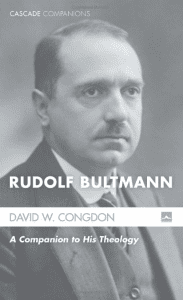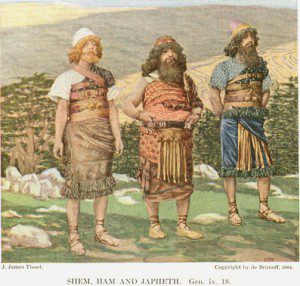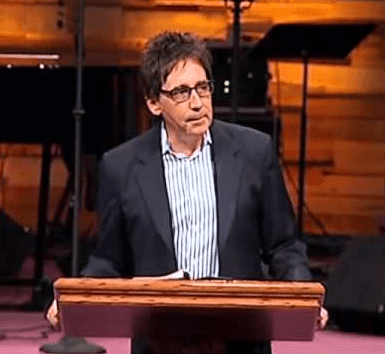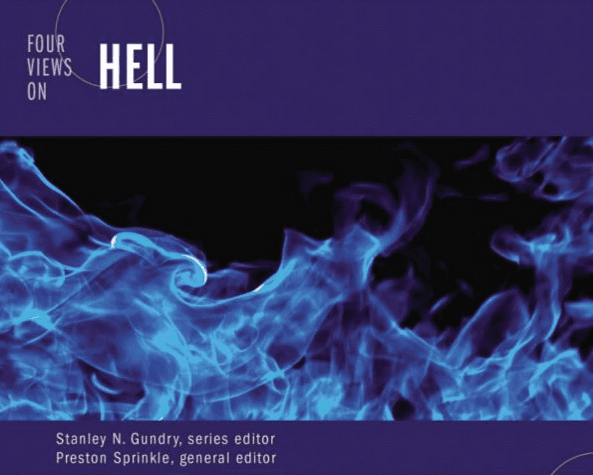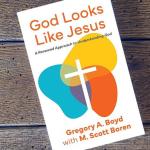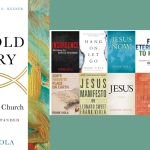Instead of using “legalism,” which has become a bogey word for bogey opponents for each of us, why not shift this term to “covenant path markers” so we can get a fresh start on a genuinely serious problem we all face?
Here’s what covenant path markers do (and now I begin to extrapolate from Holmen’s study): first, they quantify covenant faithfulness into behavior that can be measured and seen; second, they enable us to “judge ourselves” on whether or not we are faithful; and third, they enable us to judge others on whether or not the others are faithful.
Legalism, aka covenant path marking, is a vicious form of life: instead of living faithfully, we are judging faithfulness. (Don’t get me wrong, I’m all for covenant faithfulness.)
Two final comments: first, we need to admit that we are all involved in covenant parth marking. Sometimes more severely than other times; some more than others; but each of us uses various behaviors to judge ourselves and others.
Second, there are only two “theories” of the Christian life that simply cannot be “marked.” You won’t be surprised by this, but they are (1) Jesus’ use of the Jesus Creed: loving God and loving others. And, (2) Paul’s use of the category of “life in the Spirit.”
Here’s why each is “unmarkable.” Because Love is a response and a life that transcends the observable and life in the Spirit is as well. Who can say “I’ve got love down, give me a challenge” or “I’m always in the Spirit, anything else you want me to do?” These two are unmarkable in part because they are ongoing, responsive, and qualitative features of Christian existence. And they are both almost “unjudgeable”: how can we really know if someone is loving? how can we know if someone is really “living in the Spirit”? Only by converting love and Spirit into “objectified” covenant path markers, and when we do that we slip out of the embrace of love and the Spirit.
No one has summarized the “theories” of the Christian life any more succinctly than Richard Foster, in his textbook quality Streams of Living Water. He charts out six traditions, and I will look at each and how covenant path marking (aka, legalism) finds its way into each.
My prefatory remark for all of this: each of these traditions is valuable (I believe in each one) and each of them is good for us, and in saying that each can develop covenant path markers does not mean that they are to be de-valued. Nothing is further from the truth. What needs to be said, though, is this: the purpose of each is to lead us into union with God, communion with others, for the good of the world, and when that is not happening, the traditions are being misused or abused. Ultimately, this is an issue of “where our heart is” and our heart cannot be easily discerned or easily assigned. We need Spirit-led discernment to know.
The first is what he calls the Contemplative tradition, pointing to both classical and biblical examples. He uses Antony of Egypt and the Apostle John and Frank Laubach. His format is then to define the tradition (love, peace, delight, emptiness, fire, wisdom, transformation), discuss the strengths (fan the first flame, more then cerebral, prayer as primary, solitariness) and then the potential perils (separation, consuming asceticism, devalue intellectual, neglect of community). And then he suggests some practical steps for practicing the contemplative tradition: experiment, pray Scripture, practice leisurely silence).
So, how does this tradition end up with some covenant path marking?
Simply put, when any of the actions connected to the practice of contemplation are equated with or used to measure either one’s own or others’ spirituality, then it becomes covenant path marking. When I say, “She is not so spiritual because she never practices solitude” or that “I am particularly spiritual today because I have spent an hour in prayerful reading of Scripture” or “My Bible study is especially serious because we do lectio divina” then the actions are being misused. The antidote is not to stop them, but to do them aright: and to do them aright means to engage God directly, to love God, and to seek God.
Specifically, when solitude, contemplation, prayerful reading of Scripture, lectio divina, when any of these practices is used to measure spirituality for ourselves or for others, then it has become a system of covenant path marking.
Generally, we need to ask what happens as a consequence of these actions: am I becoming more loving and more holy and more compassionate or am I becoming more self-conscious or more self-congratulatory or more other-judgmental?
The purpose of contemplation is to get lost in the Wonder Who is God and to get lost in Others for the good of the world. Not just to be more “measurably spiritual.”
The holiness tradition focuses on the less-than-well known but deserving-to-be-better-known Phoebe Palmer (her biography is nearly impossible to find and prohibitively expensive), James brother of Jesus, and Dietrich Bonhoeffer (whom I’m not sure I’d place in this category). Foster sees the following characteristics of the holiness tradition: not rules and regs but sustained attention to the heart, not otherworldliness but world-affirming, not consuming asceticism but bodily spirituality, not works oriented but a striving, not perfectionism but progress in purity and sanctity, not absorption into God but loving unity with God. This is worth the price of the book.
Strengths: deeper formation of the inner personality, intentional focus on the heart, hope for genuine progress, tough-minded down-to-earth practice. Potential perils: legalism, Pelagianism (mixing grace and works), perfectionism. We can train, we can invite others into the journey, and we can stumble and get up again.
The holiness tradition leads to covenant path marking whenever we use the practices of holiness — Bible reading, church attendance, separation from specific sins, rigorous attention to specific acts and attitudes, intentional emphasis upon personal sanctity or growth in holiness, questioning social justice commitments or any other side of “worldly calling” — to judge ourselves or others as “fit” or “spiritually mature.” These things, regardless of how important you wish to make them, are not the real thing — which is union with God and communion with others for the good of the world, and dare not be confused with the real thing.
Richard Foster sketches the Charismatic tradition, the third “theory” of the Christian life, by looking at St Francis, the Apostle Paul, and William Joseph Seymour whose story today has been nearly forgotten but who had a major influence on the charismatic movement in the USA. Foster sees defining characteristics in the charismata (gifts), building in love, and the latter with four characteristics: responsibility, limitation, esteeming others, and unity within diversity. The strengths include a correction of the impulse to domesticate God, rebuking our anemic practices, spiritual growth, empowerment. And its potential pitfalls include trivialization, rejecting the rational, divorcing gifts from fruit, speculative end-time scenarios.
Again, let us clarify what covenant path marking is about: it is the attempt to measure or quantify what it means to be faithful to the covenant (as we interpret it) and to use that measure in judgment of self and others. I prefer this to legalism because legalism is always bad, and easy to use, but covenant path marking enables us to look at the function of all these actions we use to judge and see that they are both good and bad, good because they can be expressions of covenant faithfulness but bad when they are used to judge others and bad when they become the goal of Christian existence.
But, there is here too a danger with covenant path marking. Whenever manifestations of the gifts — tongues, healing, words of prophecy — become the criterion of judgment of self and others, then we are dealing with covenant path marking. Whenever we judge ourselves as either “making the grade” or “not making the grade” because we do or do not manifest the gifts, or whenever we judge others on the same basis, then we have turned a means of grace and edification into an end or a manifestation of the Spirit into the Spirit itself.
How does “legalism,” or covenant path marking, make its appearance in what Foster calls the Social Justice tradition of how to configure the Christian life?
First, Foster appeals to his all-time favorite, John Woolman, to Amos, and then to Dorothy Day. You can’t find three better examples, though I would have appealed here to Jim Wallis. There are three great themes in the Social justice understanding of the Christian life: justice, mercy, and peace. Three arenas: personal, social, and institutional structures. The strengths are the call to right living, the enhancement of ecclesiology, the bridge between personal and social ethics, the concretization of what love means, a foundation for ecology, and the relevance of the impossible idea. The potential perils are that it can be an end in itself, a strident legalism, and (too often) too close of a connection with a political party/agenda. To practice the social justice tradition, Foster suggests we be open to being used by God, get the facts, become advocates for the marginalized, support relief agencies, become politically involved, write on behalf of persons, pray for the world.
How then does this become an issue for covenant path marking? Social justice becomes a covenant path marker whenever Christians identify themselves more with a political party than with Christ (which would lead Christians to unity with other Christians even when they differ politically), whenever participation in our “special cause” is used to judge our own righteousness, someone else’s righteousness or the unrighteousness of someone else, whenever the State becomes “right”, whenever a political party becomes our place of identity, whenever we see social issues overwhelming the fullness of the gospel — which is designed for the whole person and for the whole of society. Whenever evil is urbanized and systemic structures are suburbanized.
Again, this has to do with where our heart is: social justice concerns are good — after all, the Bible brings up poverty constantly and Jesus was at heart concerned with the marginalized. The issue is not the concern, but whether or not we are using those concerns for the good of others or for the advancement of our own self.
According to Foster, the Evangelical tradition of the Christian life focuses on the Word. (Don’t equate this with the current raging debate about what an “evangelical” is; Foster’s usage is broad.) He uses three examples: Augustine, Peter, and Billy Graham.
The Evangelical tradition is known for faithful proclamation of redemption and reconciliation, for the faithful preservation of the gospel, for the faithful interpretation of the gospel — and the delves here briefly into the creeds. The major strengths: call to conversion, missionary mandate, biblical fidelity, sound doctrine. The potential perils: fixate or the peripheral or non-essential, sectarianism, limitation of salvation to getting to heaven, and bibliolatry.
How does the Evangelical tradition of the Christian life develop covenant path marking? Whenever I am judged by how much I know about the Bible, or whenever I judge others for that. (Believe me, I’m a Bible teacher but…) Whenever Bible reading is more important than living properly, whenever a human is seen as nothing more than a potential convert, whenever sound doctrine destroys human relationships (be careful here for it is good to be sound but not in any way that destroys the other), whenever someone’s worth is measured by how close they are to you in your theology, whenever the gospel is reduced to getting to heaven, whenever the Church is equated with “only my own local church”, whenever the Bible is de-personalized, whenever theology is seen as more important than its goal to make us “perfect” or people who love God and love others.
For all the caveats about all these things, please give my other posts some attention. I don’t want to repeat all these all the time. But, let me add this in defense of those of us who see ourselves as Evangelicals: nothing in our concerns is bad; but what is good can be distorted to where it is no longer a good. I think that makes it clear.
The Incarnational tradition, more accurately the sacramental tradition, is Foster’s weakest chapter, partly I’m guessing because he is Quaker. At any rate, he chooses Susanna Wesley, examines briefly divine aesthetics, and then looks at Dag Hammarskjold. As for its defining parts, Foster sees it as concerned with God as manifest through material means and that the material mediates the divine. There is a religious dimension and an arena for the everyday life.
[By way of critique: nothing substantial on the Lord’s Supper; nothing on Eastern Orthodox theology of icons, which is where this is most clearly elucidated; nothing on Roman Catholic churches and the like. Nothing on Alexander Schmemann’s For the Life of the World.]
The strengths: God is with us, it roots everyday life, gives meaning to work, corrects Gnosticism, beckons us Godward, the body becomes important, and deepens our ecological sensitivities. The potential perils include idolatry and the sense of managing the divine through the material.
When does the Incarnational tradition become covenant path marking: whenever specific embodiments of the faith — say the Lord’s Supper, baptism, candles, crosses — are identified with what they are intended to reveal or manifest or make present. Whenever we judge our own spirituality on the basis of whether or not we have “done one of these things” or whenever we judge others on that basis.
Covenant path marking is here to stay because of human nature. The mystery of the Christian life is that it is about union with God, communion with others, for the good of the world — and any means or any material embodiment or anything else that is designed to lead us to that can never be as important as loving God, loving others, or living in the Spirit. We need to keep in mind that we have a tendency to confuse the ring with the beloved.
We also need to keep in mind that what we value will become a covenant path marker, revealing to us that covenant path markers are good but not the end, not the goal toward which we strive.
Finally, we need to realize that everyone of us is susceptible to this problem, so let us quit thinking that others have the problem with legalism.


